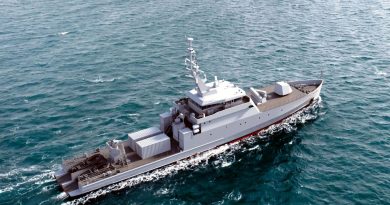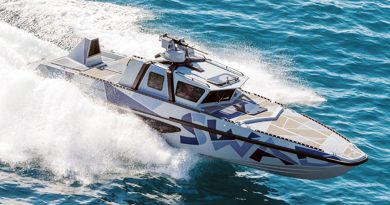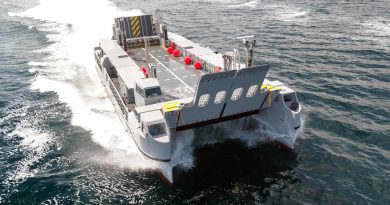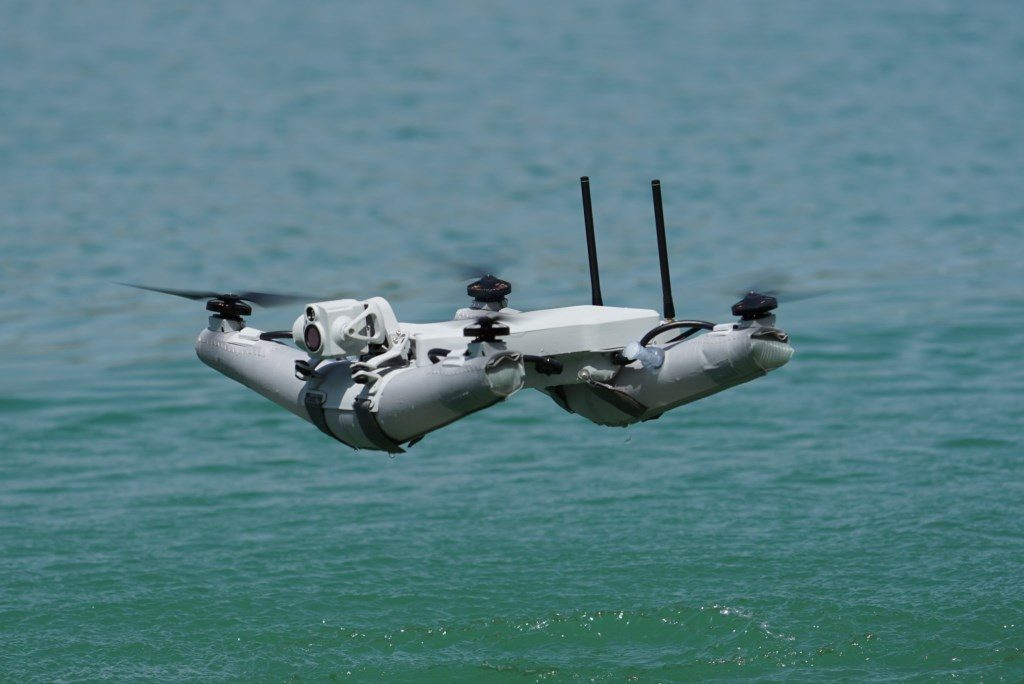
Mini-drone capability for small vessels courtesy of Diodon
Diodon Drone Technology, the French start-up based in Labège, on the southern outskirts of Toulouse, was created in March 2017, its two founders aiming at promoting amphibious VTOL drones, exploiting an inflatable solution they developed.
“Our first quadcopter, the SP20, was in fact a developmental item with some limitations, which allowed us to get operational feedbacks from our customers, over one dozen having been sold to European units, mainly Special Forces,” Antoine Tournet, CEO and co-founder of Diodon Drone Technology tells EDR On-Line.
Based on the experience acquired with its first product, Diodon Drone developed a new amphibious drone; announced last July, it was to be officially launched at Euronaval. Named HP30, it remains within the category of mini-drones, its MTOW being less than 2 kg, but its performances and technology level are much higher than those of its predecessor.
While maintaining the inflatable solution, its architecture is completely different: the SP20 had a single cruciform inflatable body while the HP30 features a catamaran-type body with two separate inflatable canoe-like floating elements, which carry at their extremities the electric motors and rotors. The two elements are linked by a rigid beam that hosts avionics and battery, with the optronic package at one extremity. “The decision to shift from one cruciform to two linear inflatable elements was due both to production and maintenance considerations, “Tournet explains, “as on one hand it allows us to manufacture simpler standardised elements, while on the other it is now possible to replace only part of the structure reducing the logistic footprint.” The canoe-like shape was developed aiming at aerodynamic optimisation, but also considering a good stability when afloat: the HP30 can be deployed and recovered with Sea State 3-4 (SS4 under validation). The new Diodon Drone product is not much bigger than the previous one, its footprint being 500×600 mm (versus 450×550 mm of the SP20), weight increase being around 25% while the payload is increased by 50%.
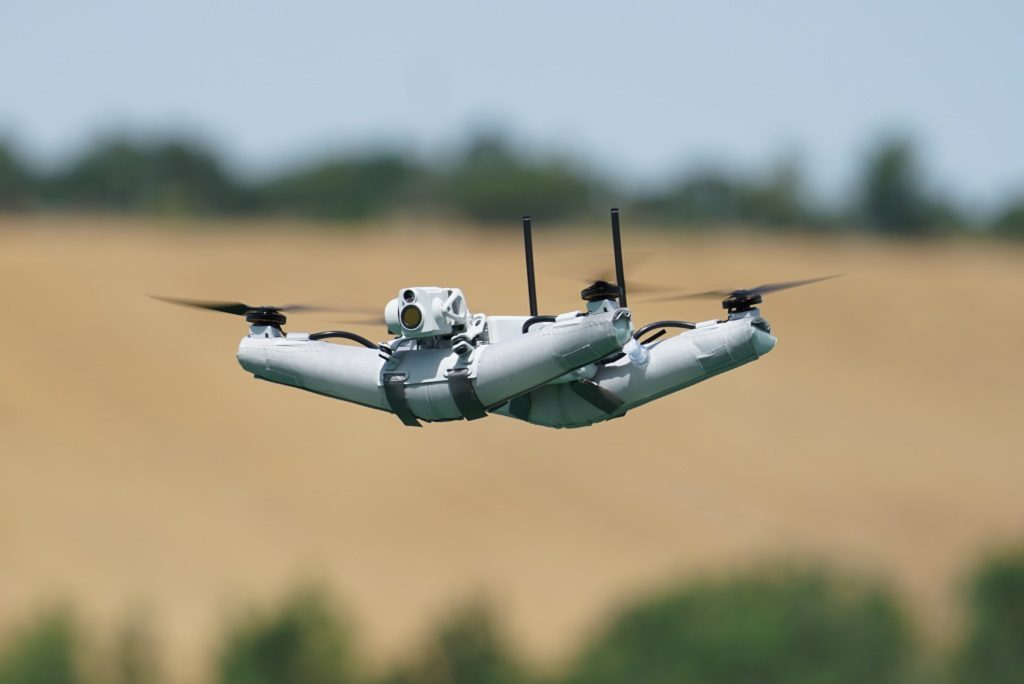
“What changes considerably is the level of technologies involved, as our new drone features state-of-the-art technologies that we can find on the most modern VTOL drones,” the company CEO underlines, adding that “we have now a digital fully encrypted data link, versus the old analogue system, which provides a secure and much greater throughput, allowing to send high definition images and other cumbersome data.” The new optronic sensors package features CCD and thermal cameras, respectively with a 1920×1080 pixels matrix, which means HDTV definition, and 640×512 pixels matrix with 30 Hz refreshing frequency, both equipped with zooms, allowing much greater detection, recognition and identification ranges, which ensure the identification of individuals at a stand-off distance ensuring full acoustic stealthness. Sensors integration is done in-house by Diodon, the case being fully waterproof, the optronic package being compatible with the 300 grams payload of the new drone. The sensors suite gimbal is mechanically stabilised on two axis. The HP30 can fly for over 30 minutes ensuring sufficient time-on-target at the data link 4 km maximum range. “However we can also think of a mission in which the drone remains on station until the battery charge is nearly nil, ditching then into the sea, a localisation signal allowing the mother ship to recover it at a later moment,” Tournet says. Water tightness is IP56 as in the older product, however the lessons learned led to improvements to ensure better resistance to water; i.e. the battery assembled by Diodon itself is now hosted in a sealed package installed on the top of the central beam, replacement being therefore quick and simple, with no need to open a sealed volume, while in the SP20 the battery was inside the body. The in-house packaging of the battery also means a higher flexibility in terms of technology insertion; currently state-of-the-art Li-Ion cells are used, but these can be easily replaced when higher capacity cells will be developed.
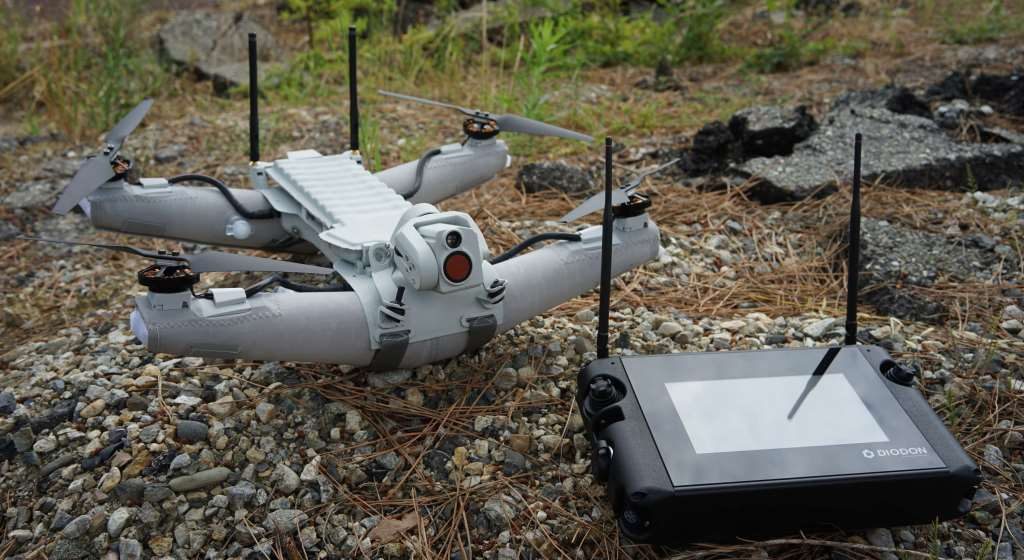
The HP30 is operated from a new ground control station, with mapping capacity and added intelligent functions, such as the one that allows the drone to follow the shortest path to the mother ship at the end of its mission, even when this has moved away from the take-off point. Navigation is ensured by GPS, however the company is already considering the addition of inertial systems to allow operations in GPS-denied scenarios, something that falls well within the HP30 growth potential capability.
The typical operation can start either from on-board the boat, a small surface being sufficient for take-off, or directly from the sea, the HP30 being put afloat by the crew. Recovery can be carried out using a boat hook, a net or by hand; if a sufficient surface is available the HP30 can be recovered on board, the inflatable elements acting as shock absorbers in case of hard landings, avoiding damages to the drone or the boat. “I would however like to highlight that our inflatable solution does not provide only a floating capability, it is also optimal for operations from soft soil, such as mud, sand or snow,” Diodon CEO underlines.
Fully ITAR-free, all subcontractors are European, the HP30 is manufactured at the company facility, where the production and assembly line are being enlarged. The drone is fully available, pre-production systems being used for demonstrations, Diodon Drone Technology being able to deliver the first products in early 2021. No information was provided on a potential launch customer, but EDR On-Line understood that discussions were well underway at least with one entity.
Looking ahead, Diodon already tested a much bigger system, known as MP40, the aim being to fly a 2kg payload. “We did that to demonstrate that inflatable solutions can be used for higher MTOW systems,” Antoine Tournet explains. “Now that we have finished the development of the HP30 we can concentrate our R&D capabilities on this new system, which until now was mainly a demonstrator, aiming at a drone with a modular payload capacity that will allow to differentiate the types of sensors installed,” Diodon CEO concludes.
To see the video please click HERE
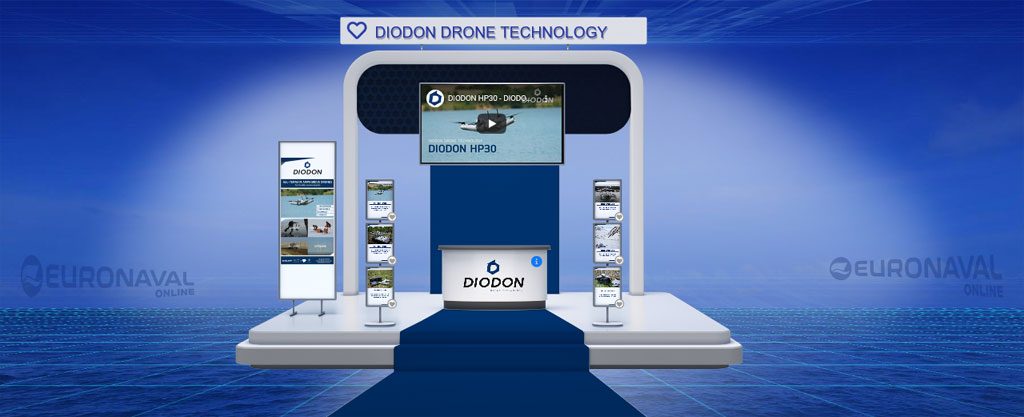
Photos courtesy Diodon

